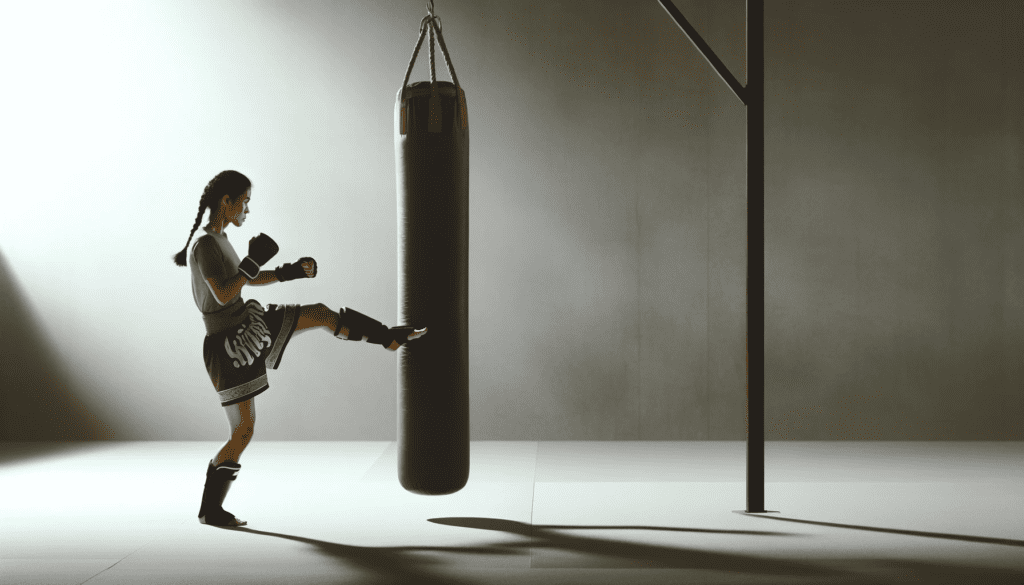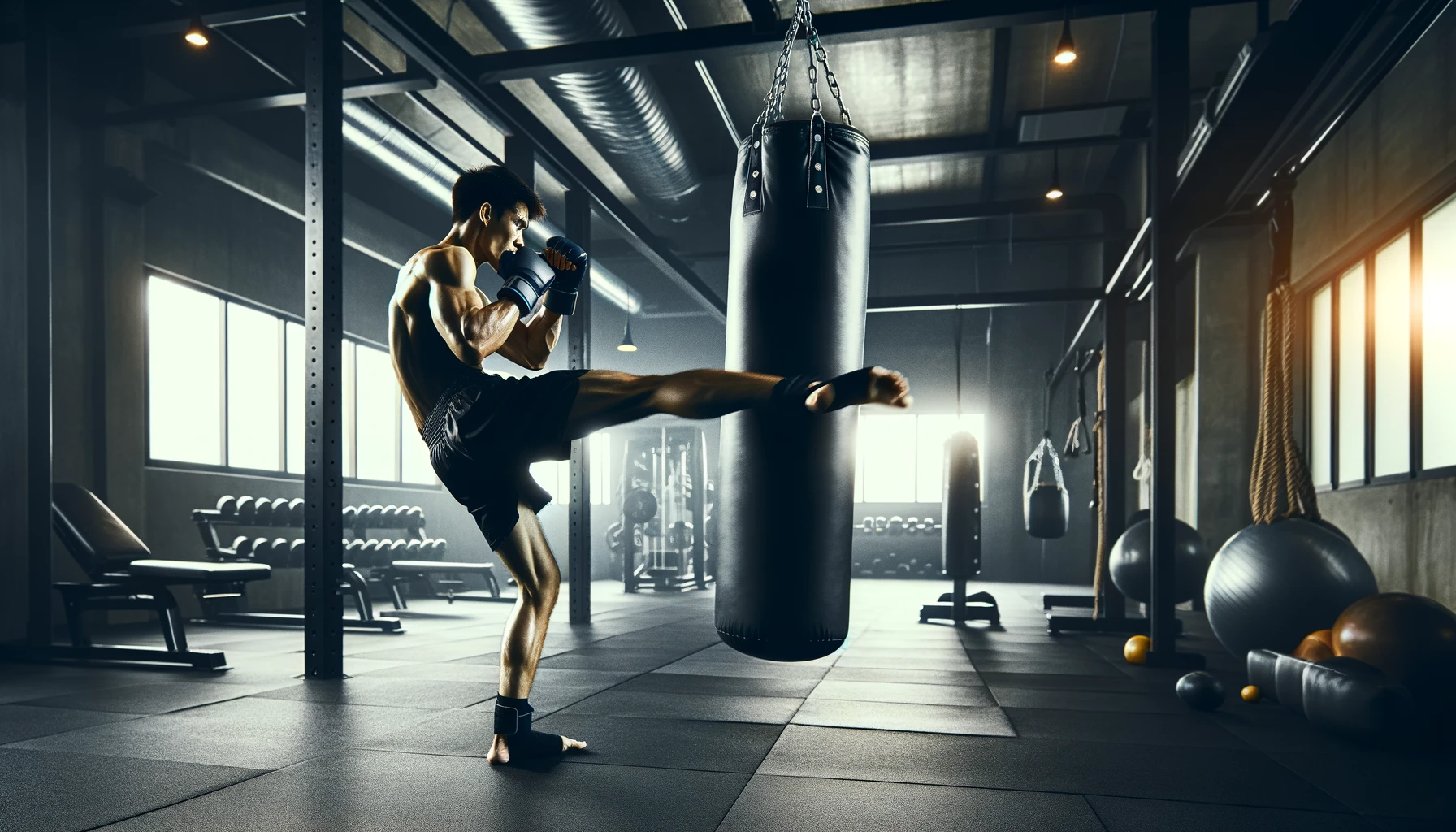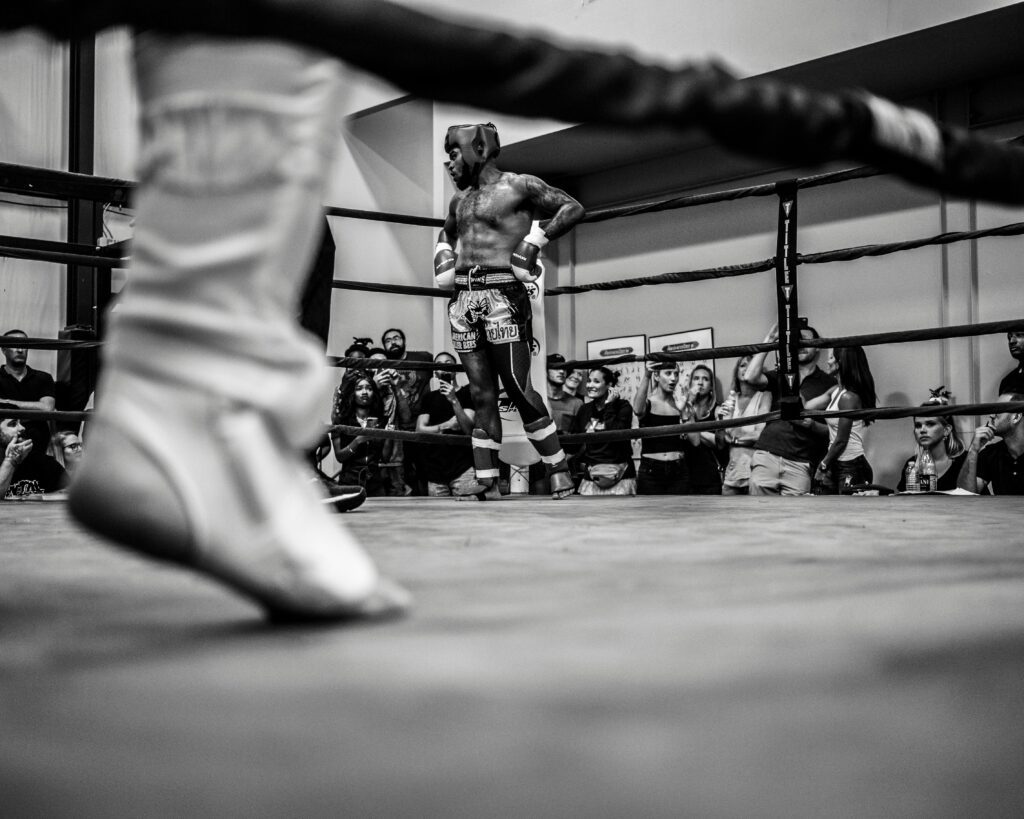Shin conditioning is crucial for Muay Thai fighters, as it enhances both offensive and defensive capabilities. To effectively condition your shins, a comprehensive approach is needed, involving specific exercises, nutritional support, and adequate recovery.
Strong shins are a fundamental asset in Muay Thai, playing a key role in delivering powerful strikes and withstanding attacks.
The Science of Shin Conditioning
- Repetition and Recovery: Regular impact on the shins, such as striking a heavy bag, causes microfractures. The body repairs these, making the bones stronger through a process called ossification. Adequate rest and nutrition are essential for this healing process.
- Benefits of Shin Conditioning:

Effective Shin Conditioning Practices
- Heavy Bag Workouts: Simulate real strikes, using the bag’s weight and flexibility to condition shins without risking serious injury.
- Sparring: Helps acclimate to combat, improves reflexes, and teaches effective blocking techniques. It’s important to focus on relaxed movement and controlled breathing.
- Bone Density Enhancement: Rolling a metal or acrylic tube over the shins can help improve bone density, covering all areas evenly.
- Weight Training: Exercises like weighted toe-raises and calf raises strengthen the tibialis anterior muscle and increase bone density.

Nutrition and Recovery
A balanced diet rich in protein and carbs is vital for muscle and bone health. Recovery, including rest and sleep, is crucial for repairing and strengthening muscles and bones post-training.
Patience and Gradual Progress
Avoid extreme methods like kicking hard objects. Start slowly with a heavy bag and gradually increase intensity. This long-term approach prevents injuries and builds shin strength effectively.
Short Conclusion
Shin conditioning in Muay Thai is a blend of disciplined training, proper nutrition, and recovery. A holistic approach involving these elements ensures the development of strong, resilient shins, enhancing overall fighting performance.





